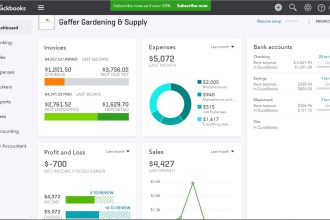Some days, you don’t have much time to trade; your account is small, or you don’t have access to many trading tools.
- 1. Trade Only With Money You Can Afford to Lose
- 2. Analyze the Market Carefully Before Investing
- 3. Don’t Trade When You’re Emotionally Disturbed
- 4. Learn How to Read Chart Patterns
- 5. Have A Clear Trading Plan and Stick to It
- 6. Never Trade Without Having a Stop Loss In Place
- 7. Keep Learning As Much as Possible
- Final Words
All of these things can make trading difficult for you. But that only means you have to improvise.
Still, sometimes it feels like you’re at a disadvantage, and it’s hard to overcome that feeling of helplessness.
But let me ask you this – Have you ever seen someone do something amazing with a tiny account? What about someone with a tiny account who is extremely successful?
If you have, then you’ve probably seen how it’s possible to achieve great things with a small trading account.
In this article, I’ll share some secrets for trading with a small account – so that you can still make big returns, even when your account is small.
Now let’s get started
1. Trade Only With Money You Can Afford to Lose
As a beginner trader, it’s important to trade only with money you can afford to lose. It’s best if it’s money you don’t plan on using for any other expenses.
The reason is simple. If your trading account is hit hard by a large loss, then you’ll end up not trading for days or weeks until you can rebuild your account.
It’s better to lose a small amount of money every day than to lose a large amount of money all at once.
You need to realize that no trading strategy is perfect and that every trade you’re taking is a risk.
If you lose a small amount of money every day, then you have time to recoup the loss, continue trading, and replenish your account.
If you lose a large amount of money at once, then you may not be able to trade until you can rebuild your account.
Trading is a marathon, not a sprint. The goal is not to make money quickly but to make consistently good trades over a long period time.
2. Analyze the Market Carefully Before Investing
When trading, it’s important to analyze and research your investment carefully before investing.
You need to research the industry, the company, its competitors, and its financial status before making a decision to trade it.
For example, if you’re day trading stocks, you need to analyze its quarterly earnings report to see if it’s performing well or not.
Other factors to consider are the overall market status, the day of the week, the time of day, upcoming earnings, etc.
A good trader will analyze the market and trade accordingly. He/she will also take advantage of a momentary opportunity and this position might last for a few minutes or a few hours.
A good trader will analyze the market and trade accordingly. He/she will also take advantage of a momentary opportunity and this position might last for a few minutes or a few hours.
3. Don’t Trade When You’re Emotionally Disturbed
If you’re emotionally disturbed you can’t trade well. Emotionally disturbed people just do not do well at most things in their life. Trading is no different.
Emotions can have a profound effect on your trading career and cause you to make some expensive mistakes.
Take control of your emotions by learning to manage your emotions effectively.
Don’t get worked up or upset. Keep a level head, especially when you start losing money on a trade.
It’s easy to get angry or upset during a losing streak. But doing so will cause you to lose more money in the long run.
Stop trading when you’re upset or angry and look for other opportunities. Remember, trading is a marathon, not a sprint.
Don’t give up if you lose a few trades in a row. There’s a good chance that today’s losses are tomorrow’s winners.
4. Learn How to Read Chart Patterns
Chart patterns are an important part of technical analysis and can help you make better trading decisions.
Chart patterns are basically visual representations of price movements that repeat themselves over and over.
Patterns can help you tell the difference between a trend and a correction or a consolidation period.
There are four main types of chart patterns, which can be divided into reversal and continuation patterns.
Reversal patterns are patterns that occur at the bottom of a downtrend or at the top of an uptrend. These patterns help traders recognize when a trend may be ending and a change in direction may be imminent.
Continuation patterns are patterns that form in the middle of a trend and indicate when the trend is likely to continue. Some common continuation patterns are triangles, rectangle tops, flags, etc.
You’ll need to learn how to apply different trading strategies, what factors influence price action, and how to incorporate proper risk management techniques into your daily trading routine.
For example, you’ll need to master how to trade super bullish chart patterns like pennants and wedges to profit from explosive moves in the markets.
Likewise, you’ll want to learn how to identify bearish chart patterns and short the market at the right moment to profit from falling prices in a bear market.
5. Have A Clear Trading Plan and Stick to It
As humans, we always want to go “all in.” We want to gamble it all and chase a big score. The problem with gambling is that it doesn’t work that way.
While trading is fun and winning is exciting, it’s usually short-lived, and often leaves a trail of broken dreams, broken relationships, and broken wallets.
Trading is a completely different game.
Investing requires patience. Every trade you take needs to be well thought out and disciplined.
Trading takes patience and discipline, so even though we want every trade to be a winner, we shouldn’t be gambling with our money.
Traders who gamble often end up losing a lot of money. Successful traders have a plan, and they follow the plan.
The markets are always changing and new trading opportunities arise every day. However, just because a new opportunity arises doesn’t mean you should act upon it.
Don’t fall into the trap of “trading the news.” News events happen every day but that doesn’t mean every new opportunity is a good one.
Many novice traders make the mistake of acting on every market event, hoping for a big win.
You need to have a trading strategy in place that you follow every day, no matter what. A trading system is a series of rules and guidelines that you follow for every trade you take.
The most important part of a trading system is a well-defined risk/reward ratio.
The risk/reward ratio is simply the amount of money you are willing to risk per trade vs. the amount of money you expect to make per trade.
For example, let’s say you expect to make $100 per trade and risk $10 per trade. In this case, your risk/reward ratio is 1:10 or 1%.
If you risk $10 to make $100, then for every $1 you risk you stand to make $10.
This is a recipe for success and a sound way to manage your trading capital. The risk/reward ratio is what makes day trading so profitable.
6. Never Trade Without Having a Stop Loss In Place
Setting a stop loss is the first line of defense you have in place to protect your trading account.
While it’s essential to have a stop loss in place, it’s equally important to know when to take profits and exit a trade.
Stop losses are placed below the most recent swing low or moving average and sometimes exits are triggered by signals.
Some traders prefer to exit trades manually when a certain percentage or profit level is reached while others use an automated strategy to exit trades based on predefined conditions.
Unfortunately, sometimes we get caught up in our emotions and lose our focus and stop out prematurely.
When this happens, it’s important to keep your emotions in check and not let a loss affect the rest of your day’s trades.
That’s why it’s essential to have a trading strategy in place and know where your stop losses will be in advance to prevent this from happening.
7. Keep Learning As Much as Possible
Finding the day trading edge is a lifelong journey. As you learn more and more about the market, you’ll be better prepared to trade with success.
Learn as much as you can about trading and the market. Read books, watch videos, take courses, and attend seminars.
Keep an open mind and your learning will continue indefinitely. The more you learn, the more successful you’ll be as a trader and the more money you’ll make over time.
Be open to new ideas and new ways of thinking. As you learn more each day, you’ll inevitably come across new ideas that you hadn’t considered before.
These ideas can be very valuable to you in helping you to become a better trader in the future. The best way to learn how to become a better trader is to just start doing it.
Final Words
Trading with a small account is like running a marathon. If you’ve never run a marathon before, the best thing you can do is to start small and train for it.
The biggest mistake traders make is jumping into the marathon without training. Even if you did train for it, your chances of finishing the race are extremely slim.
Trading is no different. You cannot expect to start trading with a small account and be profitable right from the start.
Most traders lose their entire account in their first few months of trading. It’s better to start small and learn the ropes than to jump into trading with real money and lose it all.
Trading with a small account means you have to be disciplined with how much you can risk per trade. If you can make $100 per trade, then you should not risk more than $10 per trade.
It’s also important to pick your trades wisely. Don’t trade on news events or big breakouts.















